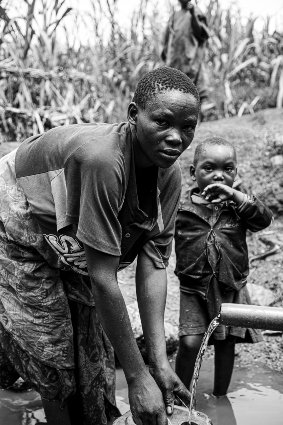 WS V&As can be carried out at the national or regional level to help develop policies and identify priority areas for investment, or at the watershed or system level to inform the development of risk management programs such as Climate Resilient Water Safety Plans and Sanitation Safety Plans.
WS V&As can be carried out at the national or regional level to help develop policies and identify priority areas for investment, or at the watershed or system level to inform the development of risk management programs such as Climate Resilient Water Safety Plans and Sanitation Safety Plans.
National level assessments can be used to:
- identify regions that are particularly vulnerable to climate events
- make regulatory decisions on resilient WASH technologies
- identify areas where emergency response and disaster risk management efforts should be targeted.
Sub-regional or system level WS V&As can strengthen understanding of how water and sanitation systems within a district or community respond to current climate variability and their capacity to adapt to the effects of climate change. The scale of the assessment will determine the type of climatic, hydrological, or sector-specific inputs required. Typically, WS V&As should make use of:
- downscaled global climate models (GCMs) to make regional climate forecasts
- historical weather records of temperature and precipitation changes
- socio-economic data
- WASH coverage levels and institutional capacity for an integrated assessment of exposure, sensitivity and adaptive capacity of systems.
As part of this project, a resource titled Guidance on developing climate change and WASH vulnerability and adaptation assessments is being developed on behalf of the World Health Organization. It aims to support countries to develop WASH systems that are resilient to current and projected impacts of climate variability and change. The target audience of this guidance will primarily be practitioners from government ministries and relevant agencies, such as those with responsibility for water or health, as well as meteorological, hydrological, and/or climatological services. In addition, this guidance may support non-government organisations and the not-for-profit sector, and academic/research institutions working to support climate resilient WASH services.

